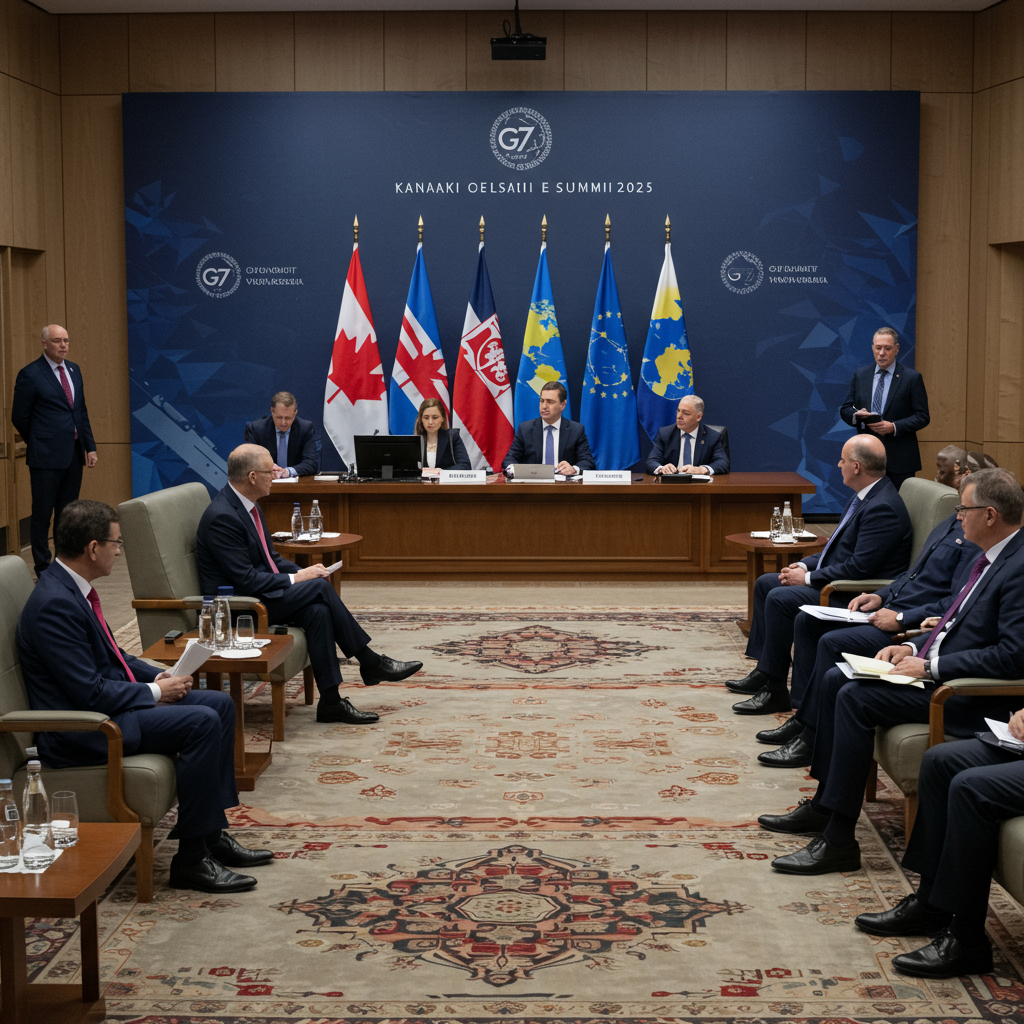Global Leaders Chart New Course at Inclusive G7 Summit in Canada
The annual gathering of the Group of Seven (G7) advanced economies in Kananaskis, Alberta, in June 2025 was anticipated with a sense of uncertainty. With the return of former President Donald Trump to office, the United States had adopted positions on trade and global order that sometimes diverged sharply from its traditional allies. Some observers even began referring to the summit as the “G6 plus one,” reflecting the perception of the US as an outlier rather than a steadfast partner.
However, under the proactive stewardship of host Canada, represented by Prime Minister Mark Carney, the summit ultimately demonstrated a different dynamic. It became less about showcasing absolute G7 unity and more about identifying concrete “action items” and finding ways for leading democracies to make progress on critical global challenges, even when facing resistance from within the core group.
Navigating US Disagreements and an Early Departure
The summit’s complexities were underscored by President Trump’s early departure from the snow-capped Rockies. He cited the escalating conflict between Iran and Israel as the reason for his return to Washington. While he did sign a joint statement urging de-escalation in the Middle East and a ceasefire in Gaza – a critical moment of apparent unity on an overshadowing crisis – divisions were evident elsewhere. Plans for a joint statement specifically addressing the war in Ukraine were reportedly abandoned due to US objections.
Beyond Ukraine, President Trump also introduced points of friction regarding the G7’s foundational principles, publicly criticizing the decision to exclude Russia after its annexation of Crimea and expressing openness to China joining the group, prompting a swift end to a press conference by Prime Minister Carney.
Expanding the Table: A G17 in Effect?
Despite these challenges, meaningful work continued, particularly on lower-profile but vital global issues such as migrant smuggling, energy security, critical minerals, and artificial intelligence. This focus was significantly enabled by Canada’s deliberate decision to invite a diverse group of leaders from non-G7 democracies.
Leaders from South Africa, Brazil, India, Mexico, Ukraine, South Korea, and Australia joined the discussions, expanding the table well beyond the traditional seven members. A group photo featuring 18 faces visually captured this shift, signaling a potentially new era in international cooperation where global alliances are being redefined.
John Kirton, director of the G7 Research Group at the University of Toronto, characterized this expanded gathering as effectively a “G17,” encompassing the G7 nations, the invited rising middle powers, and representatives from the European Union and NATO. Prime Minister Carney’s stated goal for this inclusivity was to “magnify the power and shared purpose of the G7 on a much greater global scale” by collaborating with this broader group of democracies.
Experts view this expanded format and willingness to proceed as a pragmatic response to evolving global dynamics. Philip Luck, an expert on international trade, suggested it’s not a rejection of working with the US but rather partners “pushing ahead” when the US “sits on its hands.”
Outcomes: Action Items Over Joint Communiques
Reflecting the underlying rifts, the summit concluded with seven narrow statements issued by the G7 members rather than a single, overarching joint communique – a rare omission last seen in 2019 amidst similar divisions. This absence underscored the difficulty in achieving full consensus on all fronts.
However, this did not signal a lack of accomplishment. As Lori Turnbull, a professor of political science, noted, the summit was less about a “show that everybody is united” and more about agreeing on “a set of action items.” The lengthy list of these agreed-upon actions indicates that substantive progress was made regardless of inconsistencies in US engagement.
Furthermore, the summit did see some instances of cooperation on the sidelines. Canada and the US agreed to finalize a bilateral trade deal within 30 days, and the US and UK successfully finalized their own trade agreement. After President Trump’s departure, Prime Minister Carney stepped into a more prominent role, forcefully condemning Russia’s “barbarism” in Ukraine and announcing increased Canadian military support for Kyiv.
In conclusion, the 2025 G7 summit in Canada highlighted a “change moment” in international relations. While navigating friction with the United States, host nation Canada successfully fostered a more inclusive forum that allowed leading democracies to collectively address key global challenges and chart new courses for cooperation, proving that the G7’s influence can be magnified by embracing a wider circle of global partners.



